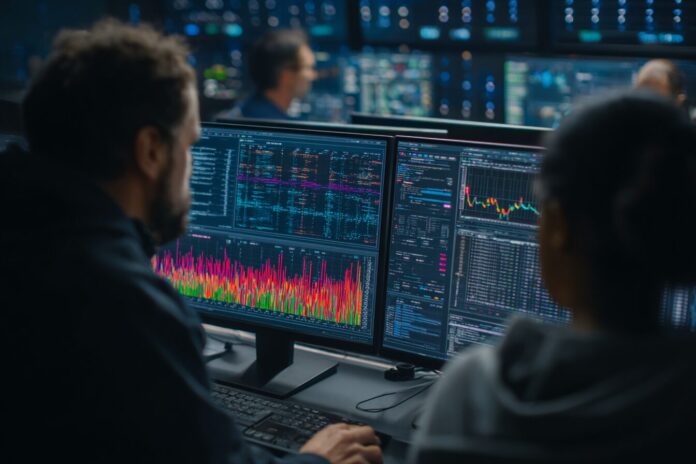Security in enterprise environments is under siege as cybercriminals exploit a critical SAP NetWeaver vulnerability, CVE-2025-31324, to disseminate the highly evasive Auto-Color malware across Linux systems. This alarming campaign not only targets widely-used business applications but also exposes persistent gaps in patch management and system hardening protocols.
Most importantly, the attack underlines the urgent need for robust, cross-platform cybersecurity strategies. Because hackers are increasingly shifting their focus to less traditional targets like Linux servers, organizations must adopt a vigilant approach. Proactive measures, continuous monitoring, and rapid patching are essential strategies to counter such advanced threats.
Understanding the SAP NetWeaver Vulnerability (CVE-2025-31324)
Disclosed on April 24, 2025, the SAP NetWeaver vulnerability in its Visual Composer Metadata Uploader received a maximum CVSS score of 10. This high rating indicates the vulnerability’s capability to cause catastrophic consequences if left unaddressed. The flaw permits unrestricted file uploads, which could lead to remote code execution and complete system compromise.
Because of this inherent risk, threat actors weaponized the vulnerability within days of its disclosure. The ease with which the flaw could be exploited serves as a warning that even well-established platforms like SAP require continuous security evaluation. For additional details, refer to the insights shared in articles from Infosecurity Magazine and HackRead.
Attack Timeline: From Vulnerability Disclosure to Real-World Exploitation
By late April 2025, adversaries exploited CVE-2025-31324 in an attack against a US-based chemicals company, marking the first recorded instance of using this SAP vulnerability to deploy the Auto-Color backdoor. Initially, attackers delivered a malicious ZIP file via a crafted URI that took advantage of the file upload weakness, allowing them to drop an ELF binary targeting Linux.
Within 24 hours, the Auto-Color malware was successfully planted, establishing a covert foothold on the compromised host. This rapid exploitation underscores the speed at which cyber adversaries can transition from vulnerability discovery to actual system compromise. Therefore, timely patching and continuous monitoring are critical in thwarting such swift attacks. For further reading on these developments, please visit the detailed account at BleepingComputer.
Auto-Color: A Stealthy Linux Remote Access Trojan (RAT)
Auto-Color distinguishes itself through sophisticated evasion techniques that enable it to infiltrate and persist in Linux environments. Initially observed in November 2024, the malware has resurfaced with significant modifications in its operational design. It targets high-value sectors such as higher education, government, and the private enterprise space.
Because Auto-Color renames itself to /var/log/cross/auto-color upon execution, it effectively blends into the file system, minimizing suspicion. Besides that, it manipulates inherent Linux persistence features, such as the ld.so.preload mechanism, ensuring that it reappears on system reboot. Moreover, every sample of the malware is embedded with a unique, statically compiled, and encrypted configuration for its command-and-control (C2) communications, further complicating detection. For more technical analysis, refer to the explanation provided by Darktrace.
Advanced Evasion and Suppression Tactics
The recent iterations of Auto-Color demonstrate advanced evasion and suppression tactics aimed at evading detection. Most importantly, when the malware fails to establish reliable C2 communication, it deliberately reduces its overt malicious activities, pretending to be dormant. This behavior makes it harder for analysts to distinguish between normal system activities and malicious actions.
Furthermore, attackers incorporate DNS tunneling techniques and establish inbound connections to malicious infrastructure. These methods further obfuscate traffic patterns and complicate the detection process by standard network appliances. Therefore, defenders should employ enhanced network monitoring and behavioral analytics to catch these covert operations. Insights on these tactics can be found at HackRead and Red Canary.
Impact and Targets: Why Linux and SAP?
SAP NetWeaver serves as a mission-critical application server, underpinning enterprise resource planning, analytics, and crucial business operations. Therefore, its deployment on Linux systems is not only common but also central to many organizations. Because Linux is often perceived as more secure, it frequently receives less attention regarding patch management, making it an attractive target for hackers.
In exploiting the SAP vulnerability, attackers gain extensive access that can be leveraged for intellectual property theft, lateral movement, or further malware propagation. Most importantly, the integration of SAP in core business functions means that a successful breach can lead to widespread operational disruption. For additional perspectives on its impact, please read the report from Red Canary.
Defending Against Auto-Color and Similar Threats
Security experts unanimously urge immediate patching for CVE-2025-31324 to prevent unauthorized exploitation. In addition, regular audits of Linux servers are imperative to detect persistent artifacts such as modifications in ld.so.preload. Because this vulnerability exploits file upload functionalities, organizations should tightly monitor associated directories to defend against similar attacks.
Moreover, a layered defense strategy involving robust endpoint detection and response (EDR), behavioral analytics, and real-time network monitoring for unusual DNS activities is essential. This proactive approach not only helps in rapidly identifying intrusion attempts but also minimizes damage by halting the progression of stealthy malware like Auto-Color. More detailed guidance on defensive measures is available from Darktrace and HackRead.
Conclusion: Heightened Vigilance Required
As this campaign clearly demonstrates, attackers are rapidly evolving their techniques to exploit disclosed vulnerabilities, especially in critical infrastructure like SAP. Therefore, IT leaders must integrate continuous vulnerability management, cross-team communication, and regular security assessments into their organizational policies.
Because the exploitation of CVE-2025-31324 is coupled with the advanced stealth features of Auto-Color, organizations face a new era of targeted attacks. Rapid patching, enhanced network monitoring, and well-coordinated incident response initiatives are more crucial than ever to safeguard sensitive data and maintain trust. As a final note, continual adaptation in defense strategies is imperative to keep pace with emerging cyber threats. For more real-time updates and expert commentary, visit the cybersecurity sections on Infosecurity Magazine and BleepingComputer.
References
- Infosecurity Magazine: Auto-Color Backdoor Malware Exploits SAP Vulnerability (2025-07-29)
- Darktrace Blog: Auto-Color Backdoor: How Darktrace Thwarted a Stealthy Linux Intrusion (2025-07-29)
- HackRead: SAP NetWeaver Vulnerability Used in Auto-Color Malware (2025-07-29)
- Red Canary: CVE-2025-31324 in SAP NetWeaver enables malicious file uploads (2025-07-15)
- BleepingComputer: Hackers exploit SAP NetWeaver bug to deploy Linux Auto-Color malware (2025-07-29)



